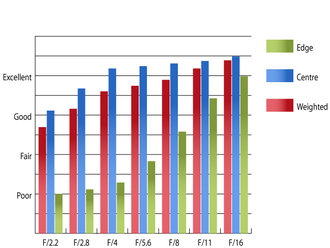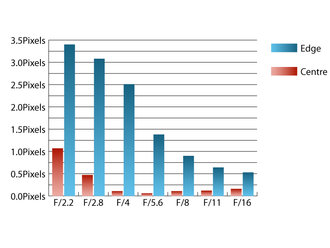Lomography x Zenit 85mm f/2.2 Petzval Art Lens Review
Lomography Petzval 85mm f/2.2 Art Lens Performance
Updated 25/03/14: The lens tested initially, was a very early sample of the lens, with a two-digit serial number. Lomography invited us to test a later sample, as they are convinced it will perform better. The original Kickstater page does state that, 'The lens as well as its accompanying lens hood will also undergo small design changes,' so we will take a look at what has changed on this second sample provided.The second sample supplied has a serial number of 4262 and the exterior is much the same as the original sample tested, except that the brass finish appears to have been polished to a shine. Focusing is much smoother, with enough resistance in the mechanism to prevent the lens elements from moving inside the barrel when the lens is tilted. The focus mechanism still has a very short throw though, so accurate focusing can still be quite tricky, although it is much easier than with the first sample tested.
The Waterhouse aperture plates are stamped with the values for the aperture they represent, rather than painted in white. Although this means there's no chance of the lettering wearing off, it can be difficult to see which aperture you've selected, unless you're in very good light. The apertures seem to correspond better with the exposure values you might expect than the ones supplied with the previous lens did. The design still means that they can fall out of the lens if you're not careful and that it may be easy to misplace the aperture plates over time.
Sharpness in the centre of the frame is much improved at every aperture compared to the first sample. In fact, sharpness in the centre is quite respectable, being good in the centre at f/2.2, very good at f/2.8 and excellent at f/4. Sharpness towards the edges of the frame is poor at fast apertures, but this is to be expected due to the effect this lens produces. To really see the effect, backgrounds with lots of regular detail are required, such as patterned wallpaper, or light shining through tree branches. Without this, images lack the swirly look the Petzval lens design is known for, which limits its overall usefulness.
 MTF @ 85mm | How to read our chartsThe blue column represents readings from the centre of the picture frame at the various apertures and the green is from the edges. Averaging them out gives the red weighted column.The scale on the left side is an indication of actual image resolution. The taller the column, the better the lens performance. Simple. For this review, the lens was tested on a Nikon D600 using Imatest. |
Chromatic aberrations are much higher on the second sample of this lens, even exceeding one pixel width in the centre of the frame at f/2.2. This rapidly drops as smaller apertures are selected.
 CA @ 85mm | How to read our chartsChromatic aberration is the lens' inability to focus on the sensor or film all colours of visible light at the same point. Severe chromatic aberration gives a noticeable fringing or a halo effect around sharp edges within the picture. It can be cured in software.Apochromatic lenses have special lens elements (aspheric, extra-low dispersion etc) to minimize the problem, hence they usually cost more. For this review, the lens was tested on a Nikon D600 using Imatest. |
Falloff of illumination is quite pronounced, which may actually enhance the vignette effect produced by this lens. At f/2.2 the corners of the frame are 2.69 stops darker than the image centre and visually uniform illumination is achieved with the aperture stopped down to f/5.6 or beyond.
Distortion is well controlled. Imatest was only able to detect 0.815% pincushion distortion, which is quite a low level and should not require correction in most cases.
Falloff and distortion are identical to the first tested sample. However, the second sample is much more resistant to flare, although contrast can be visibly reduced when shooting into the light in some cases.
Add your message
Login required
Please login here or if you've not registered, you can register here. Registering is safe, quick and free.
Please login here or if you've not registered, you can register here. Registering is safe, quick and free.
photodo Stats
1102 lenses
428 MTF tests
74 in-depth photodo reviews
100+ users join each day
Help the lens community by reviewing or rating a lens today via our lens search
428 MTF tests
74 in-depth photodo reviews
100+ users join each day
Help the lens community by reviewing or rating a lens today via our lens search
Latest Lens Reviews
- Chinon 28mm f/2.8 Vintage Lens Review
- Canon EF 70-200mm f/4L IS II USM Lens Review
- Samyang AF 85mm f/1.4 EF Review
- Sigma 70mm f/2.8 DG Macro Art Review
- Samyang AF 24mm f/2.8 FE Review
- Meike 50mm f/1.7 Review
- Tamron 70-210mm f/4 Di VC USD Review
- Lensbaby Burnside 35mm f/2.8 Review
- Asahi Super Takumar 50mm f/1.4 Review
- Asahi Super-Multi-Coated Takumar 135mm f/3.5 Review
